QuestionMy 5 year old son received a betta fish as a goody bag at a child's birthday party about three weeks ago. (Inappropriate yes, but my son is very excited by this little guy so I really want to keep it well.) The directions it came with were to change the water twice a month and feed it 3-4 pellets (supplied) a day. The fish, named Marlin by my son, lives in a regular fish bowl with a castle he can swim through and Betta pebbles. I have used bottled water at room temperature the two times I have changed his water. My questions: (1) I have read lots of answers on this site about water temperature. Not wanting to kill my son's fish, I will get it a light. Is there anything special I need to do to help the fish adjust from room temperature water to warm water? Can the light be turned off at night so as not to distueb my son's sleep? (2) The fish seems to be hungry after I give him the four pellets so I've been giving him five or six once a day, which he consumes in a minute or two. Am I feeding him enough? Too much? Not enough? Thanks for any guidance you can offer.
AnswerHi Lisa;
I am so glad you care so much about Marlin. I doubt most of the others given in the goodie bags to the other children will survive. You are right, it is inappropriate and cruel really. Too many of these poor little bettas are treated as objects, as well as being thrust upon people who really don't have time or don't want to take care of a fish. **okay, I'm stepping off my soapbox now** ;-)
The important thing in changing the water temperature is to do it slowly. Just let the heat of the light bring it up and have a thermometer in the water so you can tell what the temperature really is. When changing water, be sure the clean water is the same temperature as the old. If you can avoid turning off the light at night it is best for Marlin. The temperature will drop and get too cool again. Maybe your son would consent to him being moved from his room just at night so he can stay warm. Or, get a small aquarium of 4 or 5 gallons that can safely have a heater in it. The smallest thermostatically controlled aquarium heaters are 25 watts, which is the right one for a 4 or 5 gallon size tank. This way your little fella can have Marlin in his room and warm all the time and even a little catfish or two with him for company once it breaks in. I will include my article on new tanks to help you understand that whole crazy "break-in" process.
I usually recommend feeding 3 or 4 pellets a day. Many fish will eat until they can't stuff it into their mouths anymore, but it isn't really healthy. It is okay if Marlin seems a bit hungry afterward. Much better to have a little bit hungry fish that is healthy than a fat one with liver problems. Yikes!
Change his water every week. It keeps waste toxins down to a minimum, helping him stay healthy. Bottled water isn't necessary really. If you get a water conditioner it is safe to use your tap water instead. So much easier too. Unless your tap water isn't drinkable, then of course I would suggest using the bottled. A good water conditioner is still a good idea. It also helps with stress. I like Stress Coat, NovAqua and Prime. They are all good.
**********
New Tank Syndrome or Break-in Period
So you have a new tank and you filled it up, put the filter together, mounted the heater into place and turned on the lights. You have all the plants and decorations where you want them....
You are ready for fish.
But, your filter is not ready for a full tank of fish yet.
The filter is running and moving the water and cleaning out crud, right? Of course!
But a very important part of your filter is the part you can't see. An aquarium filter removes the larger visible stuff, but it also must remove the dissolved fish waste that turns into ammonia in the water. To do this, special bacteria must grow in the filter system and on the particles of gravel in the bottom of your tank. This process occurs even on a limited scale in little fish bowls that have no filter in them.
This is "New-Tank Syndrome" or the "Break-in Period". The entire process takes 6 to 8 weeks to complete because these "nitrifying" bacteria grow quite slowly.
Start off with only one or two hardy fish (no more than 2 total inches of fish) for every ten gallons of water and don't add more until the 6 to 8 weeks has gone by. Hard to be patient, but it is worth it to keep your fish alive and healthy. As a matter of fact, the bacteria cannot develop without fish in the tank. You can let that tank sit forever without fish in it, but as soon as the first fish goes in the process begins. Avoid changing the filter pads during break-in. This removes the bacterial colonies that are essential to a balanced aquarium. You can rinse the filter pad out in a container of aquarium water. This will preserve most of the bacteria colonies while still allowing your filter to flow freely. Even using bacteria additives and water conditioners when you first set up the tank will not make a tank begin the cycle by itself. If there are no fish to provide food (fish waste) for the bacteria, the beneficial bacteria cultures will die and you will have to start the colonies all over again once fish are added to the tank. Once the tank has completed the initial cycle, you can change the filter pads every 4 weeks or so. But for now, just rinse them.
Feed your new fish VERY lightly. Any excess food will cause additional waste your system cannot afford to have right now. If you see food floating around or lying on the plants and gravel after five minutes, too much food is going into the tank. Cut back a little each time you feed until it is ALL gone 5 minutes after you feed them. Feed them once a day.
During this "break-in period" your tank will become cloudy and milky looking. You may have to tolerate this for the entire break-in period but it is only temporary. Changing 25% of the water three times a week until the break-in period is over helps a great deal. Changing water reduces the ammonia and nitrites that rise while the bacteria continues to multiply. If ammonia and/or nitrites become too high, your fish will become stressed and possibly die. Use a good water conditioner when you replace the water and make sure it is the right temperature to avoid shocking your fish.
When the break-in is over after 6 to 8 weeks and there are no nitrites or ammonia present in the water you can slowly add more fish. Add one or two every week until you reach the desired population. This allows the bacteria to adjust to the new population every time before adding more. Monitor the nitrites and ammonia to be sure they don't come up. If they do, make a 25% water change and check them again. Don't add the next fish until the levels are down again.
The safe maximum population for any size tank is one inch of adult fish for every gallon of water in the tank. Do some research to be sure of the fish you are interested in. Even though they are small when you buy them, you have to base your population calculations on full-sized adult fish. Many hobbyists have up to two inches per gallon but this can be risky. If a water quality issue arises or a disease occurs it will spread fast and furious in an over-populated tank. In any case, 25% water changes every week to two weeks are absolutely essential for the health of your fish.
Following these guidelines will help you get your new tank on the right track.
**********
Followups Welcome
At Your Service;
Chris Robbins
Come on over and join us on the freshwater fish forum at About.com to get even more information too;
http://freshaquarium.about.com/od/questionsanswers/a/naavigateforum.htm
My member name is ChrisR62. See You There!

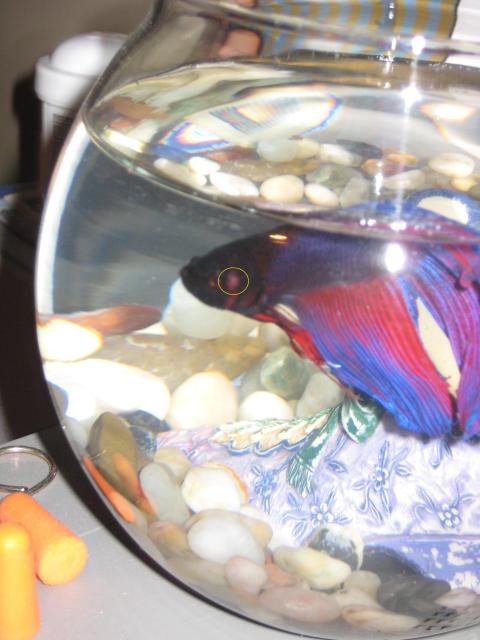 Betta Fish Sore...
QuestionFish Sore
QUESTION: I have had a male Be
Betta Fish Sore...
QuestionFish Sore
QUESTION: I have had a male Be
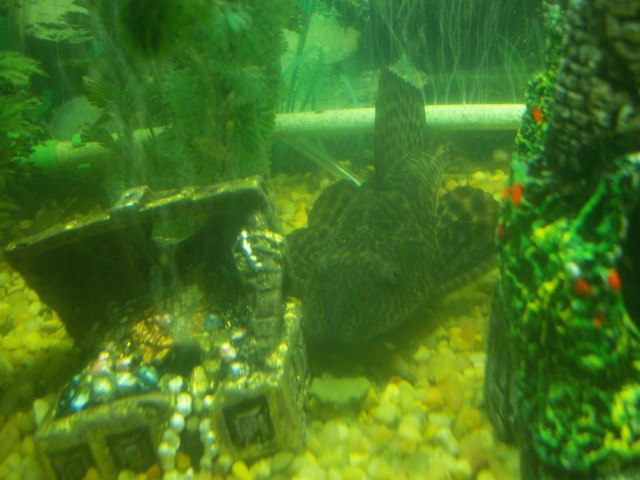 sick pleco please help
Questionsick pleco
QUESTION: Hello I have a 29ga
sick pleco please help
Questionsick pleco
QUESTION: Hello I have a 29ga
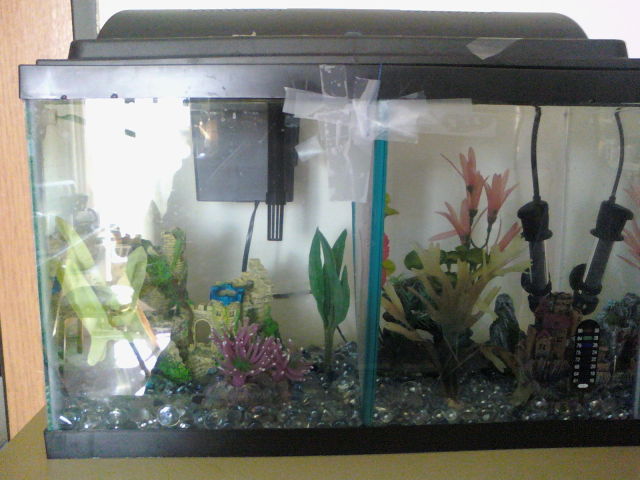 Is my filter too strong?
Question
The Home of Dorothy an
Dear Lynda,
I have a te
Is my filter too strong?
Question
The Home of Dorothy an
Dear Lynda,
I have a te
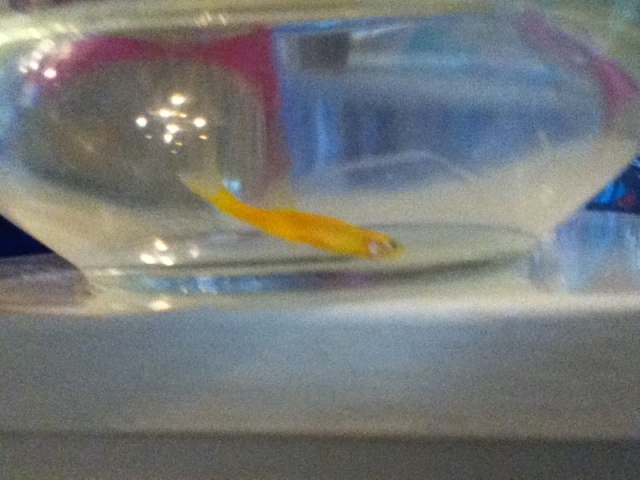 glofish tail elongated
Questionsick glofish 2
sick glofish
QUEST
glofish tail elongated
Questionsick glofish 2
sick glofish
QUEST
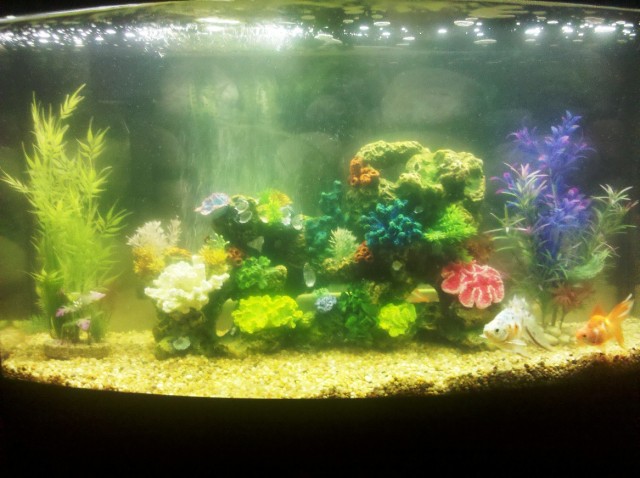 My tank water is green - help!
QuestionMy Tank
QUESTION: Hi,
I have a 46 gallon
My tank water is green - help!
QuestionMy Tank
QUESTION: Hi,
I have a 46 gallon